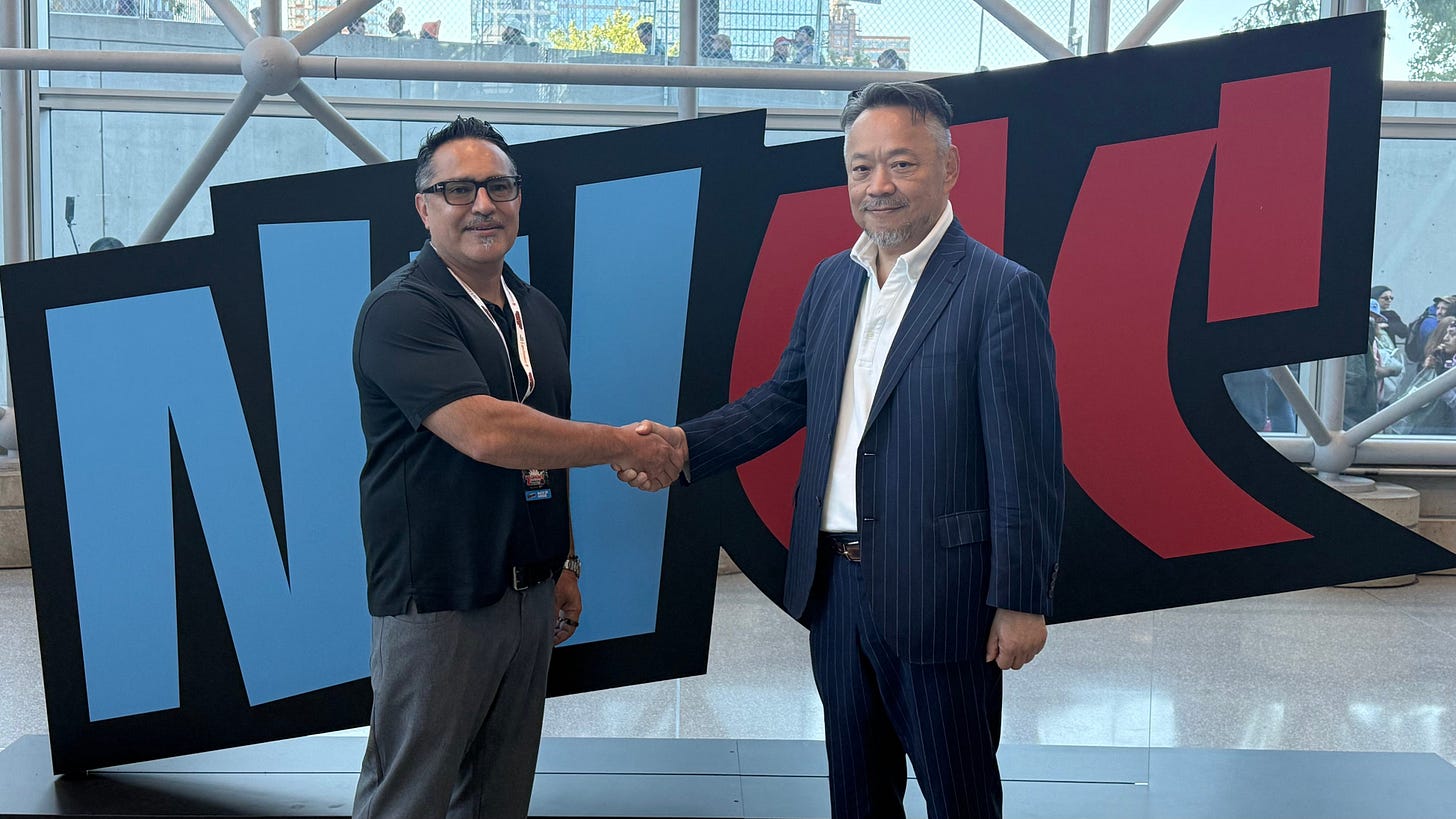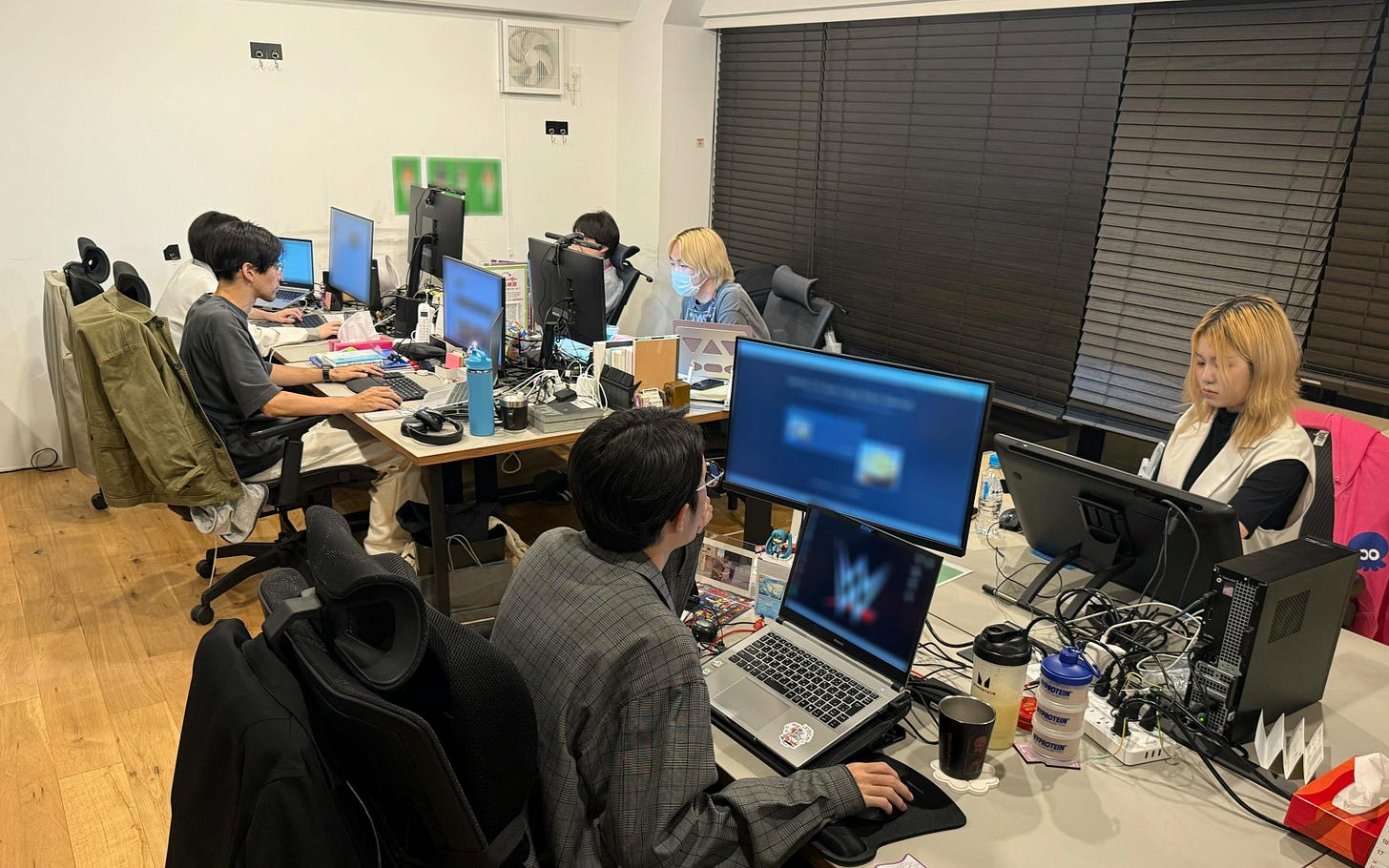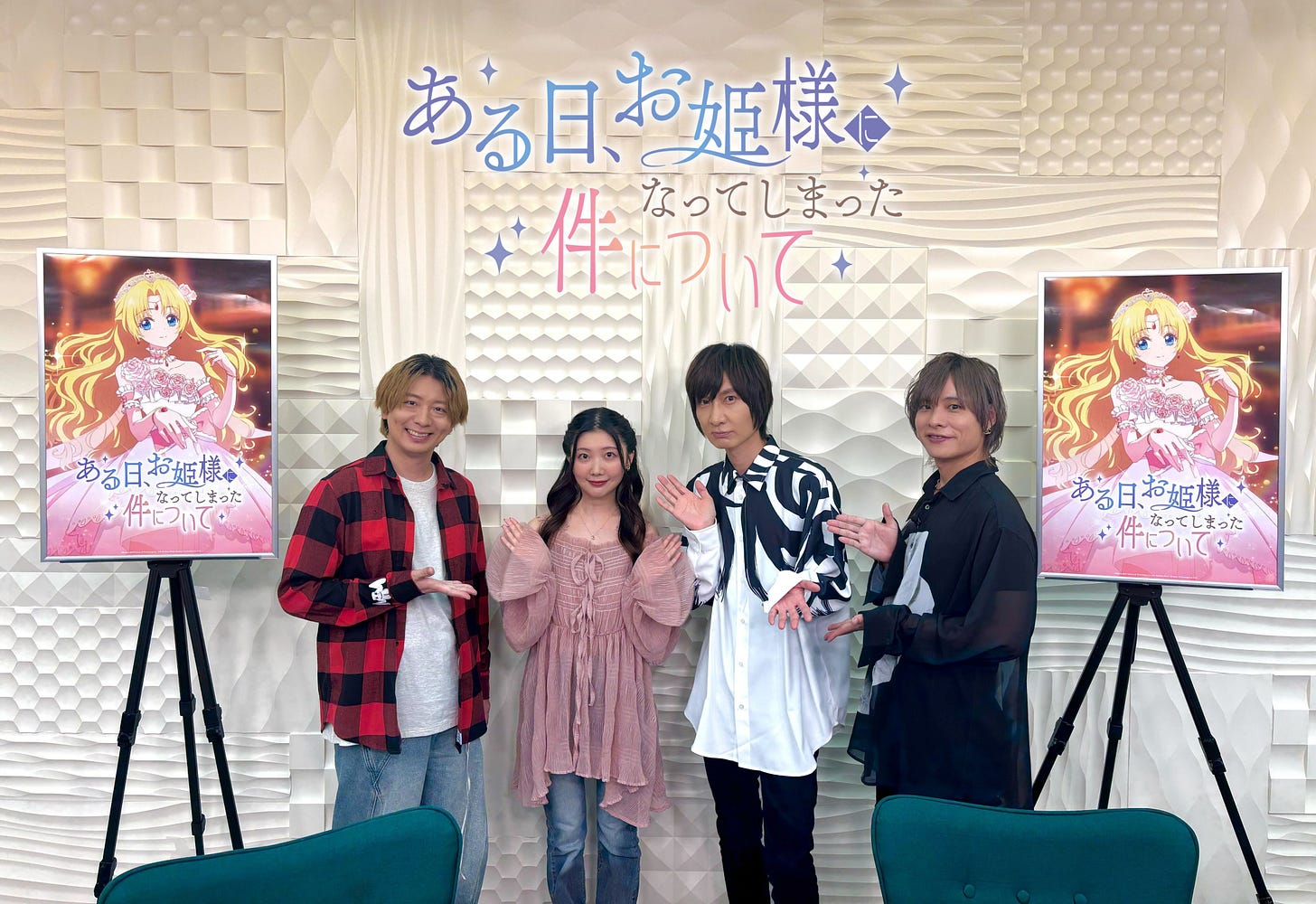Manga merchandise availability grows in U.S.
Plus: AI anime studio raises $3m funding round; Bandai Namco Filmworks to become sole Gundam IP rightsholder; Globalization of October anime lineup; and more
This is your weekly Animenomics briefing, covering the business of anime and manga. Today is Wednesday, October 15, 2025.
In case you missed it: Akane Shimizu’s Cells at Work! manga series received a major commercial boost last week after Japanese immunologist Shimon Sakaguchi received the Nobel Prize in Physiology or Medicine for his research on regulatory T cells.
U.S. pop culture retailer sells Shogakukan manga merch

Los Angeles-based pop culture retailer BoxLunch inked a deal with MAG.NET, a joint venture between publisher Shogakukan and Japanese paper conglomerate Marubeni, to sell merchandise from four of the publisher’s manga titles.
Why it matters: Merchandise featuring anime designs and illustrations are frequently available in the United States, but merchandise with manga illustrations remain rare despite a surge in manga’s popularity in the country.
What’s happening: Under the agreement, products from Frieren: Beyond Journey’s End, Inuyasha, Ranma ½, and Uzumaki will be available in 280 BoxLunch stores across the country and on the retailer’s online store.
BoxLunch, which is owned by specialty retailer and longtime anime merchandise distributor Hot Topic, will also introduce a store-within-a-store experience at ten retail locations that includes displays with manga artwork.
Backgrounder: Shogakukan and Marubeni founded MAG.NET last year in an effort to establish a direct sales channel for international buyers interested in the publisher’s manga properties and to tackle the issue of pirated merchandise abroad.
Last month, MAG.NET exhibited some Shogakukan merchandise at the Kyoto International Manga Anime Fair in partnership with online anime retailer Tokyo Otaku Mode.
MAG.NET also intends to expand its product offerings in the United States beyond titles from Shogakukan, the Nikkei financial newspaper reports.
The bigger picture: Japan’s wholesale trading conglomerates are paving the way for anime, manga, and video game companies to enter the retail merchandising market around the world thanks to their experience in overseas business development.
Gaming giant Sega and toy giant Takara Tomy will open an experimental store in Los Angeles next month with the help of Mitsubishi, another conglomerate.
Anime studio using AI tech raises $3m Series A funding

Tokyo-based technology firm KaKa Creation has raised ¥450 million (US$2.96 million) in Series A funding to further development of generative artificial intelligence tools to assist independent creators with anime production.
Why it matters: KaKa Creation drew the attention of the anime industry earlier this year after successfully producing Twins Hinahima with the assistance of AI tools and having the work picked up by domestic broadcasters and streamers.
Zoom in: KaKa Creation plans to create 20 anime works with AI assistance within the next six months, starting with a three-part series where the length of each episode is under 1 minute.
The company claims that automating coloring and conversion of photos into background art using AI reduced manual labor by about half.
In Twins Hinahima, 95 percent of shots used AI technology in one way or another, the company says.
Between the lines: The company wants to make viewers accustomed to anime made with AI assistance, especially on social video platforms like YouTube and TikTok, by increasing the number of touchpoints where the public can encounter such works.
“We want to increase our contact frequency with young people by releasing one-minute anime videos viewable on smartphones every day,” chief executive officer Yasutomo Takehara told the Nikkei financial newspaper.
Zoom out: For artist management agency Amuse, one of nine investors funding the company, the investment gives it a stake in original anime IP development, Gamebiz reports.
Securing new anime production lines have become difficult due to the industry’s labor shortages, even as more investors are seeking to enter the booming anime market.
Clippings: BNF to become sole Gundam IP rightsholder

Bandai Namco Filmworks will absorb Gundam-related and IP production businesses under advertising agency Sotsu as of April 2026, allowing Bandai Namco Filmworks to accelerate expansion of the Gundam franchise under single IP ownership. (Gamebiz)
The move is a culmination of Bandai Namco’s 2020 acquisition of Sotsu that consolidated ownership of the Gundam franchise within the group.
Regulatory hurdles in India prevent anime distributors from rapidly expanding in the South Asian country, one of the last remaining untapped markets for Japanese anime, says anime business journalist Tadashi Sudo. (Newsweek Japan)
TV Asahi successfully brought Crayon Shin-chan into Indian theaters for the first time this year, but between 2008 and 2009 the anime series was banned from being broadcast in the country.
A report from the Japan External Trade Organization published earlier this year identified limits on foreign direct investments in broadcast content and challenges with intellectual property rights enforcement as potential hurdles for Japanese content distributors.
Japanese film giant Toho revised up its projected full-year operating revenue by 20 percent to ¥360 billion (US$2.38 billion) thanks to strong cinema ticket sales from Kokuho and the first installment of Demon Slayer: Infinity Castle. (Press release)
Three unpublished manga storyboards by Osamu Tezuka, created during a career slump in the 1970s, were discovered in June and will be featured in an upcoming collection being published in November. (The Nikkei)
Fan participation drives anime’s global economic value
“Japanese anime and manga, in particular, boast a rich culture of derivative works that significantly influences overseas fans. Platforms like Pixiv, Tumblr, Reddit, and YouTube host vast amounts of fan art, parody videos, analysis content, and fan discussions. These activities not only extend the lifespan of IPs but also form a ‘co-creation culture’ where fans expand the worldview of the works themselves.”
— Toshiyuki Masubuchi, The Academy of Contents Tourism chairman
Context: Masubuchi, a Hosei University professor of human geography, argues in an AdverTimes column on Japan’s content industry that anime companies should see fan participation in stories as the engine of anime’s cultural and economic value.
“Fans are not mere consumers,” Masubuchi writes, “They immerse themselves in the fictional world, analyze it, express themselves, and sometimes create new works—thus becoming the force that keeps the story ‘alive.’”
The bigger picture: As previously reported by Animenomics, anime producers are investing in in-person experiences to push the growth of their anime properties.
October anime broadcasts showcase international lineup

Seven anime series starting broadcast in Japan in October are drawing the attention of industry observers as the works’ international origins demonstrate the business patterns shaping the new era of anime’s globalization.
Why it matters: The seven titles form the most globally diverse anime lineup in years, with five originating from Chinese properties, one from South Korea but produced in China, and one property from the United States.
What we’re watching: China’s investment capital is once again entering the Japanese anime market, says anime journalist Atsushi Matsumoto, but there is worry that direct Chinese investment could pull anime labor away from domestic productions.
Dragon Raja II: The Mourner’s Eyes, a sequel of an adaptation of a popular fantasy novel series, has the financial backing of Chinese technology giant Tencent, and production involved Japanese anime talent.
Chinese streaming giant iQIYI, on the other hand, financed The Fated Magical Princess: Who Made Me a Princess, a production based on a Korean webtoon series and supported by publishing giant Kadokawa in Japan.
Bilibili, the streaming service popular with Chinese fans of anime, released The Richest Man in Game last year but is able to bring it to Japan now thanks to its longstanding partnership with broadcaster Fuji Television.
Japanese-language dubbing has been especially important in exposing Japanese audiences to Chinese productions, leading to the success of films like The Legend of Hei in the country in 2020.
The film went on to earn ¥500 million (US$3.3 million) in Japan that year, and a sequel planned for release next month will also have Japanese-language dubbing.
Animenomics is an independently run and reader-supported publication. If you enjoyed this newsletter, consider sharing it with others.



All I can say regarding the 20 upcoming AI animes being commissioned is that the studio isn't named KaKa for nothing.
Besides that, I can see outsourcing anime productions to Chinese studios alleviating the intense overworking this industry is notorious for.